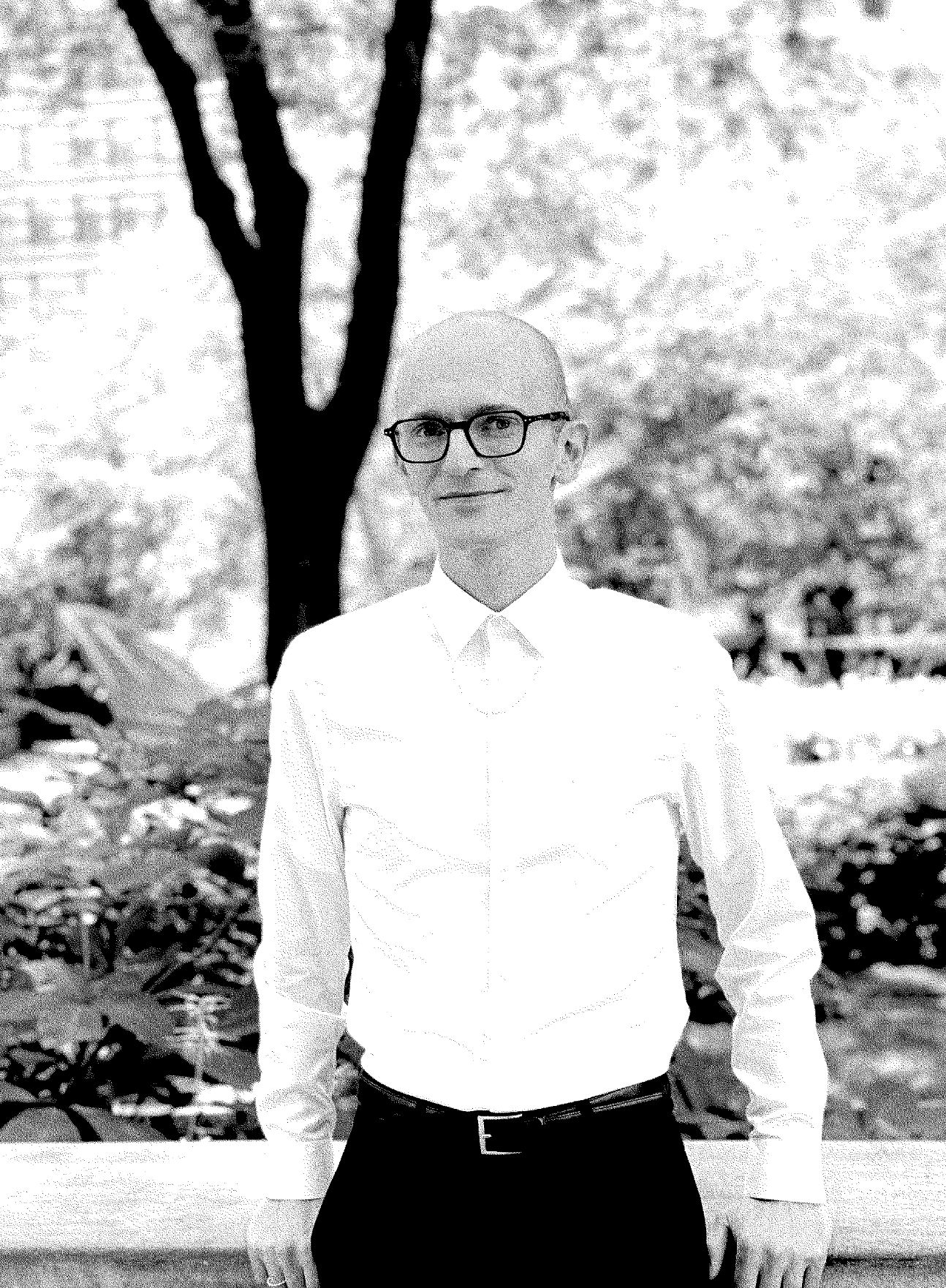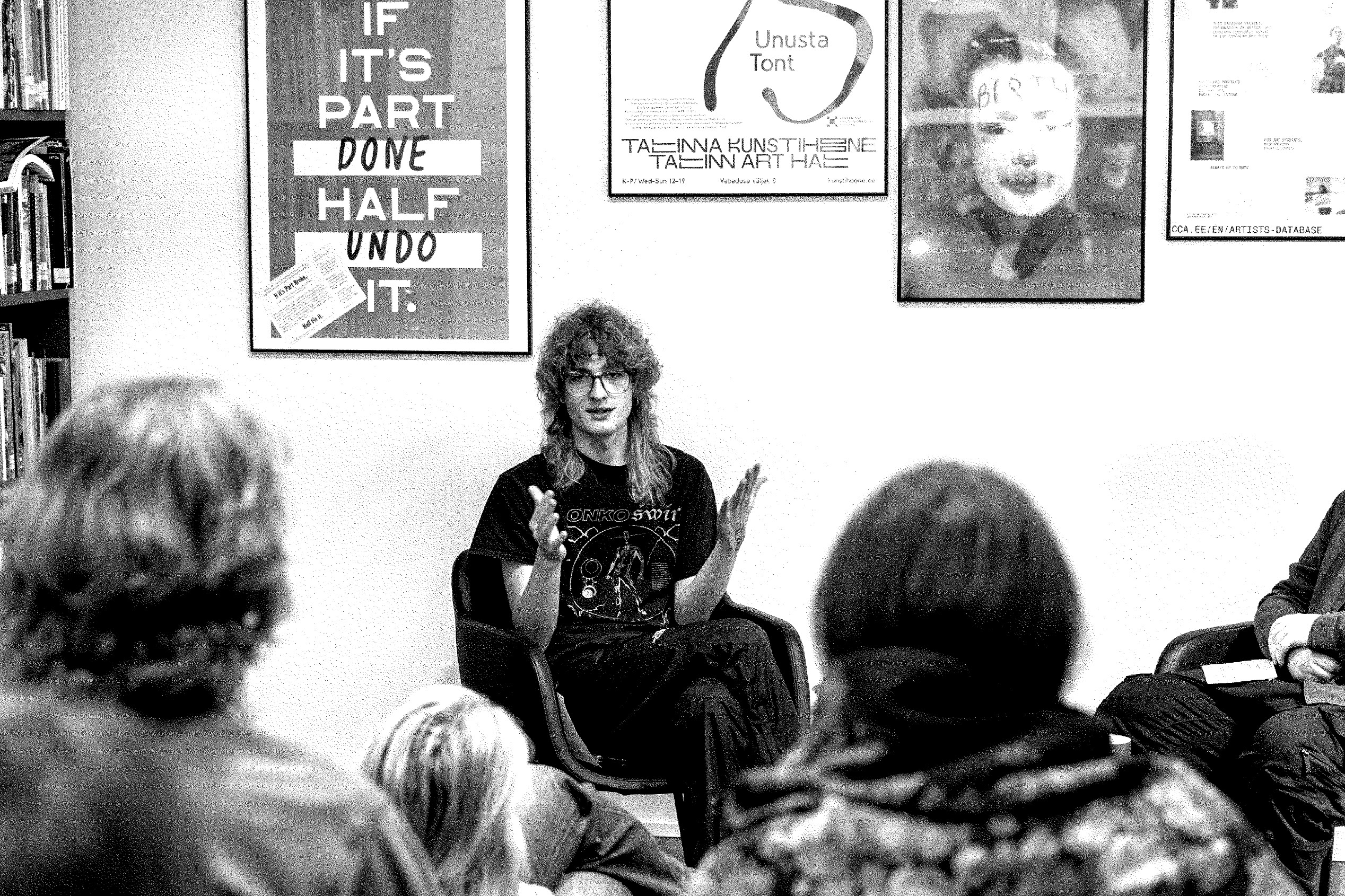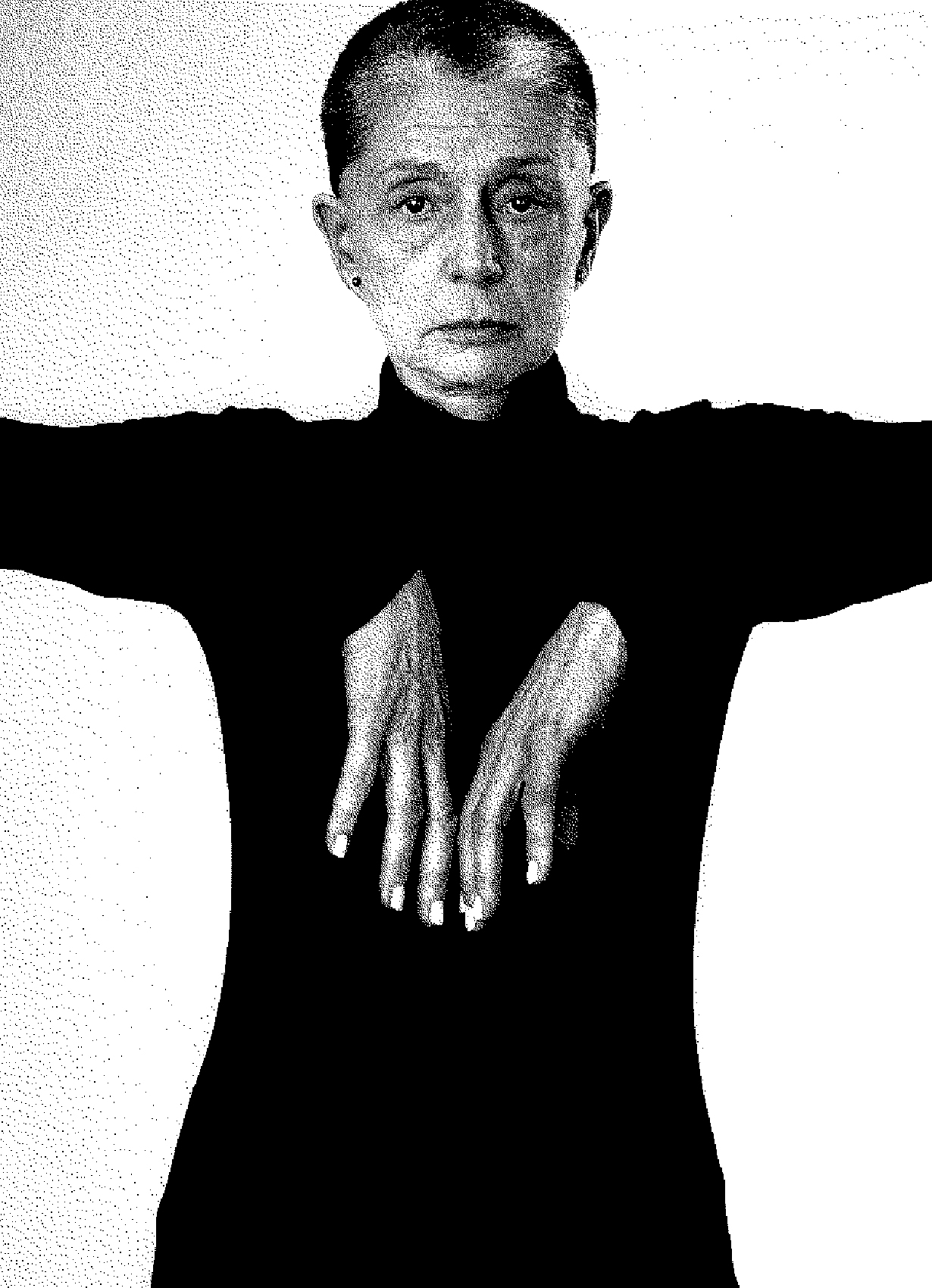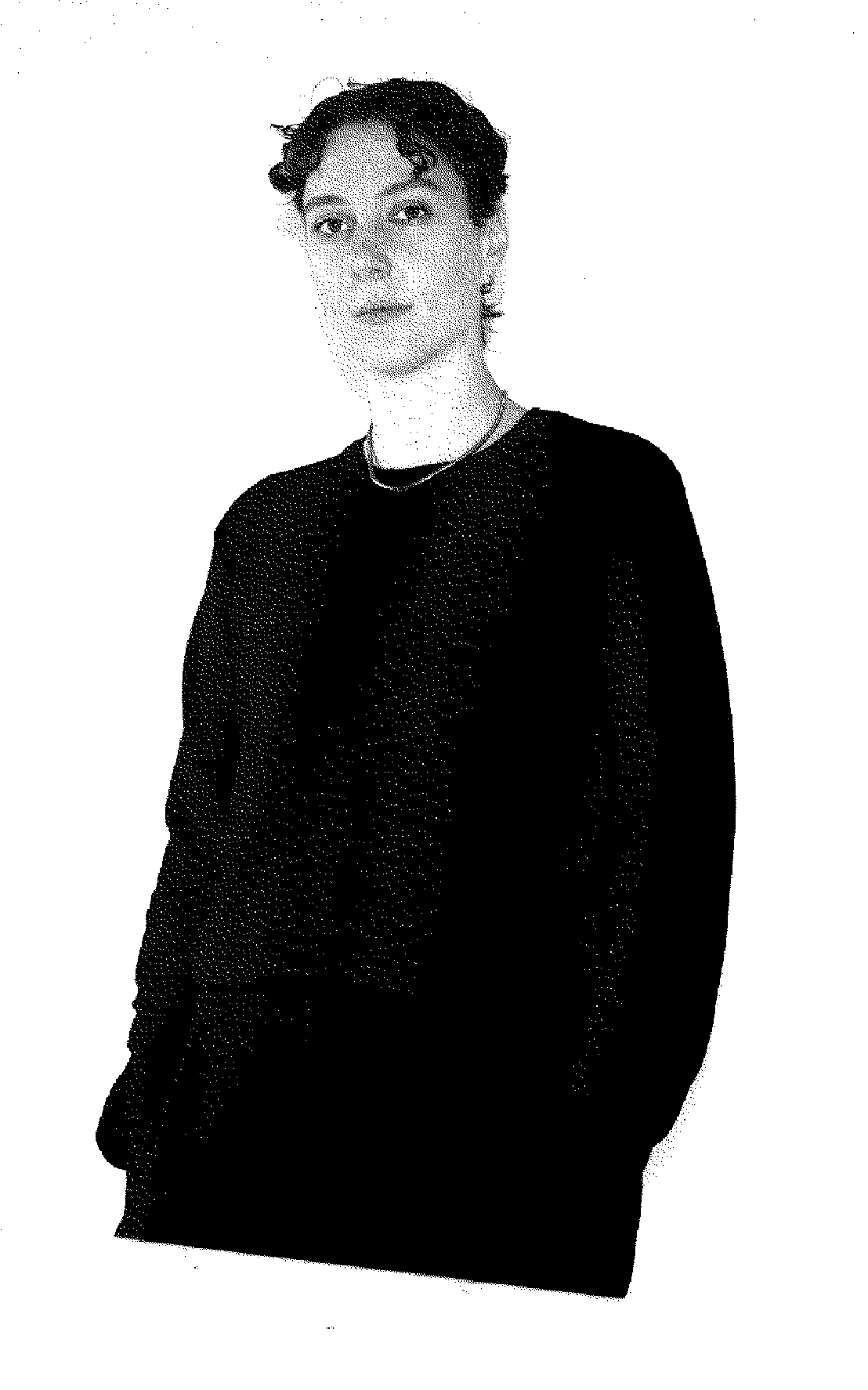In the face of wars and other catastrophic events, people are often struggling to find the right response; however, reactions are increasingly expected also from people in the art scene who have a platform or influence. Should artists and art institutions use art as a means to share often-unspeakable feelings with broader audiences or to also be active in politics and community work? Still, the scope of reactions is often determined by the profile of an institution, budgets, its capability to react fast, and also the geopolitical history of the country the artist or institution is based in. With this in mind, we asked artists, writers, curators and heads of art institutions about their stance on art and solidarity.

HENDRIK FOLKERTS: IN THE CURRENT POLITICAL LANDSCAPE, PRETTY MUCH GLOBALLY, THERE ARE FORCES AT PLAY THAT SEEK TO ERODE OR DESTROY EXISTING STRUCTURES OF SOLIDARITY.
Hendrik Folkerts is an art historian and curator. Since 2021 he has worked as Curator of International Contemporary Art and Head of Exhibitions at Moderna Museet in Stockholm. Prior to this, he worked in curatorial roles at the Art Institute of Chicago, documenta 14 in Kassel and Athens, and the Stedelijk Museum in Amsterdam.
I don’t think you can enforce solidarity. It is something that needs to be cultivated and maintained, allowed to grow over time, with great care. I also don’t want to take for granted that everyone is thinking of the same thing when we say “solidarity,” as it, indeed, has many different meanings, depending on one’s history and geographical position.
That said, in the current political landscape, pretty much globally, there are forces at play that seek to erode or destroy existing structures of solidarity, so I see a task for art institutions – and all the people in and around them – to plant new seeds. What does solidarity actually look like in the 21st century? How can it be enacted interpersonally, societally, but also digitally, for instance, as a relatively new realm of political interaction (and these days, an often moralising exclamation). This is what preoccupies me in my work at Moderna Museet, which is situated in Stockholm, Sweden, where the recent memory of the northern-European history of socialism can act like a mirage; for people to think that “solidarity” is still obvious, unchanged by decades of creeping neoliberalism, nationalism, and xenophobia. It is not.
There are many ways for an art institution to commit to cultivating solidarity – by working with artists whose practice fosters such conversations, by finding new modes of address within exhibitions (producing audiences that feel more like witnesses rather than mere observers), by being collaborative and generous towards other organisations in your city or place, by being vulnerable and welcoming critique, discussion, and polemics rather than having to always perform a certain institutional standpoint, just to name a few.

Elham Rahmati: True solidarity is not defined by proximity based on race, geography or religion.
Elham Rahmati is a visual artist and independent curator based in Helsinki. She is the co-founder and co-editor of NO NIIN, an independent online monthly magazine. She has worked as the curator and producer of the Academy of Moving People and one of the curators at Third Space, an artist-run gallery emerging in response to the lack of inclusivity and diversity in the art scene in Finland.
Art institutions are intricately linked to the governing ideology at large, so rarely ever does one see an independent take from them when it comes to reacting to political and social crises. This is perhaps why their existence is increasingly becoming obsolete when it comes to initiating, mitigating, enabling and complicating the ongoing process of radical transformation in the world. It is up to all art workers – and not only those belonging to marginalised communities – to keep pushing for change and to do so consistently, uncompromisingly, and unapologetically.
Israel’s ongoing genocide of Palestinians and the institutional reactions to it have unveiled posturing based in Western values of human rights and democracy more than ever. True solidarity is not defined by proximity based on race, geography or religion. This is what the liberation movements coming together across the world to lay siege to those maintaining structures of oppression in their many different forms are trying to tell us, and it’s high time we listen.
Vlada Vazheyevskyy: The catastrophic time which engulfs most of us from Ukraine to Palestine, Armenia to Congo, Syria to Sudan is only going to spread towards the rest of the globe.

Vlada Vazheyevskyy is a non-binary artist and researcher from Kyiv, Ukraine currently based in Scotland. In their practice they focus on anarchoqueer utopias and archiving post-capitalistic future(s). They make up ½ of the DViJKA collective with which they edited and translated the book Queer Ukraine, An Anthology of LGBTQI+ Voices During Wartime in February 2023.
It seems that most of the bigger art institutions have failed the commons yet again, and this time the consequences for them may be decisive. Instead of serving as spaces which nurture, protect and allow for imaginaries of a different way of being to manifest; instead of being the rehearsal spaces for the revolutions; instead of becoming accomplices in the fight against ongoing genocide(s) and the continuous state violence, they have, for the most part, strengthened their status as enforcers and guardians of state politics. To them I have nothing to say.
There is no going back to normal from this; business as usual is not going to cut it anymore. The catastrophic time which engulfs most of us from Ukraine to Palestine, Armenia to Congo, Syria to Sudan is only going to spread towards the rest of the globe. While of course, responses from individual and collective bodies depend heavily on their history, geography and proximity to genocide and wartime, solidarity with, and complicity in liberatory struggles need to once and for all break away from the Cold War binary and campism.
Institutions need to become havens for fugitives, refugees and direct actionists while art workers have to become accomplices in the ongoing struggles, instead of relegating themselves to the comfortable role of a reactionary.

Linda al-Assi: In dealing with the Israeli-Palestinian crisis, I advocate for a more nuanced understanding that takes into account historical and geographical dimensions.
Linda al-Assi is a jewellery designer and maker based in Estonia. She is a co-founder of Gram Studio. She has been part of local and global exhibitions, contributing both as an artist and as a member of collaborative working groups.
Artists and art institutions play a crucial role in fostering solidarity during political and social crises. By using their creative platforms to raise awareness and promote empathy, they create spaces for expressions that build understanding among diverse audiences. For me, this is where the necessity of art as a platform comes into play.
Drawing from my multicultural background as an Estonian-Palestinian, I recognise the unique role I play in Estonia by raising awareness during the Palestinian humanitarian crisis. I appreciate the responsibility I carry in using my platform to enlighten people about the historical injustice in Palestine. Political and social crises in Palestine are profoundly shaped by historical and geographical factors. The Israeli-Palestinian conflict, which began at the beginning of the 20th century, is characterised by historical injustice, displacement, and complex political factors. Geography further complicates the situation by affecting the distribution of resources and strategic importance, influencing neighbouring countries and the international community.
In dealing with this crisis, I advocate for a more nuanced understanding that takes into account historical and geographical dimensions. A holistic approach should understand local perspectives and promote diplomatic initiatives to address root causes. It is crucial for countries to work together, focusing on solving problems instead of just thinking about their interests. We need to put helping people first, not just following political strategies.

Paul Aguraiuja: Art institutions should bring society together not only in the times of political and social crisis, but on a regular basis.
Paul Aguraiuja is the Director of Tallinn Art Hall. Before joining the art world, he led his own film production company for TV-series and ran the avant-garde theatre NO99 as Senior Producer and Managing Director.
Art institutions should deal with bringing society together not only in times of political and social crisis, but on a regular basis. At Tallinn Art Hall we believe that contemporary art should be the social glue that bonds different members of society together, raises topics that they might not notice and highlights new perspectives from the others. As we are currently operating in our temporary venue in the most socio-economically complicated district of Tallinn, we see daily how contemporary art can bring together people with a very different understanding of current issues and create a spark for dialogue. Starting from that spark we will hopefully achieve greater solidarity.
The journey to increased solidarity using contemporary art will be a long one. Due to our location, about 75% of our audience belongs to the Russian-speaking minority and we have experienced the whole range of reactions and responses. The negative reactions that we see are closely connected to history, mostly to the history of failed integration politics in Estonia, mixed with a nostalgia for the Soviet era. As we work a lot with children and youth groups from the Russian-speaking minority, we see hope in the new generations as they with their open and complex identities are completely free from the historical burden. They are the reason why the art field must take a position and express that position with their work or with their location (as is the case with TAH).

I strongly believe that being in the centre of current affairs is essential for a large 90-year-old commissioning and producing exhibition house like Tallinn Art Hall. It is only with this attitude that we can actively shape the direction of the discussion and the mindset of young people. I hope we will see more art institutions all over Europe shaking off the burden of being an establishment and trying something new.
Sirje Runge: Our thoughts and actions, even the most insignificant ones, affect the whole.
Sirje Runge is an artist based in Tallinn, recognised for her geometric abstract and minimalist paintings, exploring eternal subjects. Runge was one of the leading figures among the artists who in the beginning of the 1970s created the new and more radical wave of Estonian avant-garde art.
I am old and thus have been looking at the bigger picture now for a long time. I have a feeling that creative minds, artists and scientists have a responsibility anyway; I feel our task is to keep a balance in society. Artists are messengers. No matter how much we zoom out, the natural law says that even the smallest creatures on Earth can influence the way the world works. I can sense this intuitively.

We, the human animals, are always walking on the edge and from time to time we also realise this. My message is that our thoughts and actions, even the most insignificant ones, are affecting the whole. This is our responsibility and also our hope.
Anastassia Sosunova
Anastasia Sosunova is a visual artist based in Vilnius. Her multidisciplinary practice comprising of video, installation, sculpture and graphic art often focuses on narratives about how communities and identities are formed, subsist and come undone.
The only thing I can say in the current political climate is: we demand an immediate and permanent ceasefire.